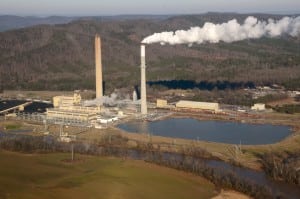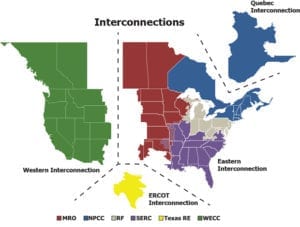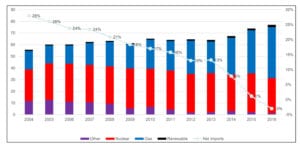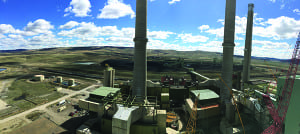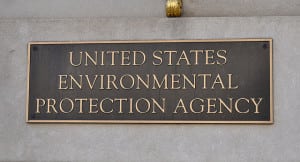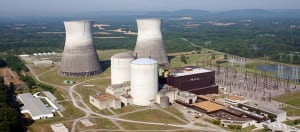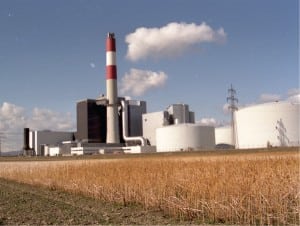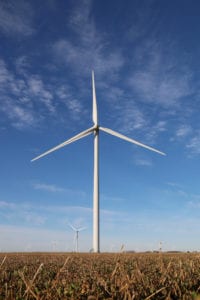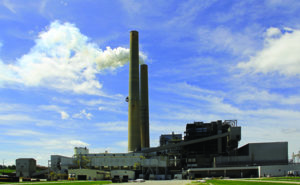Legal & Regulatory
-
News
AEP Will Close 1,300-MW Indiana Coal Unit
A federal judge in Ohio on July 18 approved American Electric Power’s (AEP’s) plan to close Unit 1 of its two-unit, 2,600-MW coal-fired Rockport Plant in Indiana. The modified consent decree approved by the U.S. District Court for the Southern District of Ohio on Thursday is the latest chapter in a long-running dispute among AEP, […]
-
News
NRC Staff Recommends Scaling Back Reactor Inspections
In a bid to enhance the reactor oversight process (ROP), staff at the Nuclear Regulatory Commission (NRC) has recommended the commission change qualitative descriptions for some color labels that signify risk, scale back on the time and scope of some annual inspections at the nation’s nuclear power fleet, as well as increase intervals between inspections. […]
-
News
Regulators Back Georgia Power Plan to Close Coal Units, Add Renewables
The Georgia Public Service Commission (PSC) on July 16 threw its support behind Georgia Power’s plan to add 2,260 MW of new renewable power generation to the utility’s portfolio, on the same day the PSC signed off on the company’s effort to decommission its long-running coal-fired Plant Hammond. Georgia Power earlier this year submitted a […]
-
Legal & Regulatory
NYC Blackout Highlights Importance of NERC’s New Regulation
The North American Electric Reliability Corp. (NERC) recently issued a regulation for all power producers to test their electrical systems for proper coordination between protective relays. This protective-relay coordination standard number 27 (PRC-27) presents a big challenge for all power plants, but particularly for combined cycle/cogeneration plants, whose lean staffs lack the electrical engineering personnel […]
-
News
EPA Delayed on Proposed ELG Revisions for Steam Power Plants
The Environmental Protection Agency (EPA) is behind on its proposed revisions to the Obama administration’s effluent limitations guidelines (ELGs) for steam electric power plants. In an e-mail to POWER on July 9, the EPA confirmed that the agency was still “working expeditiously” to complete the proposed rule, and it has yet to submit it to […]
-
News
Maximizing the Solar ITC Phaseout: Lessons from Wind
Every company invested in our nation’s clean energy transition is aware that 2019 is the last year that solar energy can take advantage of the 30% Investment Tax Credit (ITC) under Internal Revenue Code
-
Nuclear
Bringing the APR1400 Reactor to Market
The U.S. Nuclear Regulatory Commission conducts an extensive evaluation of reactor technology before approving and ultimately licensing nuclear power plants. Korea Hydro and Nuclear Power Co. Ltd. began the
-
Markets
The EU’s Power Provisions: Is Texas a Reliable Indicator?
What does the 21st century power market look like? That is the question the European Union (EU) is attempting to answer with the new electricity regulation and revised electricity directive passed at the end
-
News
Wheeler: Keeping U.S. Coal Sector Alive Will Benefit ‘International Environmental Protection’
Coal power, which has seen a marked decline in the U.S., is necessary for reliability and energy affordability, and sustaining it could boost pollution technology exports and “improve lives while driving down emissions worldwide,” said Environmental Protection Agency (EPA) Administrator Andrew Wheeler in a speech last week. Wheeler made the remarks at a 90-minute event […]
-
News
EPA Urges States to Submit CCR Programs Even as Coal Ash Regulatory Overhaul Continues
The Environmental Protection Agency (EPA) on June 24 proposed to partially approve Georgia’s permit program for the disposal of coal combustion residuals (CCR). As it did so, it gave other states some advice: Follow Georgia’s lead and assume oversight of coal ash that power plants dispose within your borders. The preliminary approval marks another important […]
-
News
Rhode Island Rejects Burrillville Gas-Fired Plant
A proposed 900-MW gas-fired power plant was rejected by Rhode Island regulators on June 20, leaving project developer Invenergy pondering its options for the planned facility in Burrillville. Rhode Island’s Energy Facility Siting Board, after a daylong hearing in Warwick, said the plant is not needed. Chicago, Illinois–based Invenergy can appeal the decision to the […]
-
Legal & Regulatory
Energy Infrastructure on Tenuous Winning Streak in the Courts
Federal courts have been pretty kind to energy infrastructure in recent weeks, particularly in cases involving the National Environmental Policy Act (NEPA). For starters, this month, the U.S. Court of Appeals for the Ninth Circuit removed one of the hurdles to construction of the Keystone XL pipeline. The court decided that a new presidential permit—issued […]
-
News
EPA Finalizes ACE Rule, Replaces Clean Power Plan
The Environmental Protection Agency (EPA) has issued a final Affordable Clean Energy (ACE) rule to formally replace the Obama administration’s controversial Clean Power Plan (CPP). Like the CPP, the June 19–issued final ACE rule will regulate greenhouse gases (GHGs), and it will be founded firmly on the agency’s 2009 Endangerment Finding. However, the ACE rule focuses […]
-
Fuel
New Jersey’s 100% Clean Energy Goal Imperils Gas Generation
Through a series of incentives and mandates, New Jersey is planning to produce 100% of its power from carbon-neutral sources, electrify its vehicle fleet and building sectors, and set mandatory efficiency standards for electric utilities by 2050, an energy blueprint released by the Board of Public Utilities (BPU) suggests. The June 10-released “Draft 2019 Energy […]
-
News
DOE’s Perry: Coal, Nuclear Must Be Saved
Energy Secretary Rick Perry said coal and nuclear power must be part of the nation’s “all of the above” energy strategy, but the Department of Energy (DOE) does not have the “regulatory or statutory ability” to establish economic incentives for struggling U.S. coal and nuclear plants. Perry, who addressed the Edison Electric Institute’s (EEI’s) annual […]
-
Fuel
India’s Coal Future Hinges on Advanced Ultrasupercritical Breakthroughs
India is striving to conserve coal and slash its carbon emissions. The country which depended on coal for 56% of its total capacity of 356 GW as of May 2019, wants to reduce coal’s share to 45% of a planned capacity expansion to 480 GW by the end of 2022. During that period, it will […]
-
Commentary
PG&E Bankruptcy Truly One-of-a-Kind
Numerous articles have boldly declared Pacific Gas and Electric (PG&E) to be the first of many climate change-related bankruptcies to come. The authors wag their fingers in caution at corporations across
-
News
Power Marketer to Tri-State: We’ll Buy and Close Your Coal Plants
A wholesale power provider in Colorado wants to supply the state’s largest electric cooperative with power from mostly renewable sources, saying it will pay Tri-State Generation and Transmission Association to retire its coal-fired plants in Colorado and New Mexico. Tri-State, at least for now, said it will not consider the offer. Denver-based Guzman Energy on May […]
-
News
[UPDATED] EPA Sets Schedules for Long List of Power Plant Regulatory Actions
The U.S. Environmental Protection Agency (EPA) will act on a spate of power plant rules over the next year, its newly released agenda of regulatory and deregulatory actions shows. The May 23-released “Spring 2019 Agenda of Regulatory and Deregulatory Actions” lists 35 new actions, along with 57 actions that it considers “deregulatory.” The list includes new […]
-
News
Judge: TVA Deal for Bellefonte Nuclear Plant Stays in Place
A federal judge this week ruled the Tennessee Valley Authority (TVA) must continue to honor an agreement to sell the unfinished Bellefonte Nuclear Power Plant to a real estate developer who has said he would complete construction of the long-idled project. U.S. District Court Judge Liles C. Burke, in a 17-page opinion issued after a […]
-
Legal & Regulatory
A Renewed Congressional Focus on Investigating the Energy Industry
Legislative scrutiny of the energy industry have picked up of late. Here are practical steps from law firm K&L Gates that your company could take to prepare for congressional investigations.
-
Press Releases
PEC Safety and Veriforce Merge to Create Comprehensive Supply Chain Safety and Compliance Platform
Merger integrates wide-ranging network of safety and risk mitigation professionals, critical compliance solutions delivered on a modern SaaS platform, and industry-leading training services. MANDEVILLE, La. and HOUSTON, May 15, 2019 /PRNewswire-PRWeb/ — PEC Safety and Veriforce, recognized leaders in delivering safety and compliance solutions to industrial markets, today announced that they have merged to create a […]
-
News
Utility Group Under Congressional Investigation Will Disband
A utility industry coalition that has often challenged stricter air pollution and climate rules for power generation said it will dissolve. The Utility Air Regulatory Group (UARG), which has been under investigation from the House Energy and Commerce Committee due to its relationship with the Environmental Protection Agency’s (EPA’s) top air policy official and his […]
-
Press Releases
Monitoring Solutions Acquires Optimal Air Testing Services
Announces Expansion into Source & Compliance Testing Services May 7, 2019, Indianapolis, Indiana: Monitoring Solutions, Incorporated is excited to announce the acquisition of Optimal Air Testing Services (“Optimal”), a Casper, Wyoming based provider of stack and source testing to support compliance, guarantee, and engineering services. Addition of the Optimal staff brings tremendous industry knowledge, experience […]
-
News
EPA Will Issue Final Carbon Rules for Power Plants in June
The Environmental Protection Agency (EPA) plans to take final action to repeal the Clean Power Plan in June 2019, a federal court filing shows. The agency told the D.C. Circuit—in a May 6 status report—review of the Obama-era rule that sets the first carbon dioxide limits for existing power plants “continues to be a high […]
-
News
EMP Threat Real but Limited, EPRI Says in Much-Anticipated Report
Depending on the hazard field, electromagnetic pulses (EMPs) resulting from detonation of a nuclear weapon at high altitude or in space could cause significant damage to electronics on the bulk power system and even prompt a regional voltage collapse, the Electric Power Research Institute (EPRI) says in much-anticipated findings from its three-year study on high-altitude […]
-
Commentary
How Qualified Opportunity Zones Can Spark Green Energy
While the new Qualified Opportunity Zones (QOZ) program initially has drawn widespread interest regarding real estate development, it also appears likely to generate promising opportunities for green energy
-
News
Best Practices for Wind Project Partial Repowering
Partial wind project repowering enables owners to generate more energy from their sites, extend the life and improve the availability of their projects, and take advantage of extended renewable energy
-
Workforce
Allocating Risks Strategically: How to Complete Successful Power and Energy Projects
Power and energy construction projects are often complex and nearly always full of risks. On some jobs, miscalculating schedules and underestimating material expenses can result in hundreds of millions of
-
News
Indiana Regulators Reject Vectren Plan for Gas Plant
The Indiana Utility Regulatory Commission (IURC) on April 24 rejected Vectren’s proposal to build an 850-MW natural gas-fired power plant to replace two coal-burning units at its A.B. Brown Generating Station, along with another coal unit at a nearby plant. The commission said it based its decision on the potential financial risk to ratepayers who they said […]



